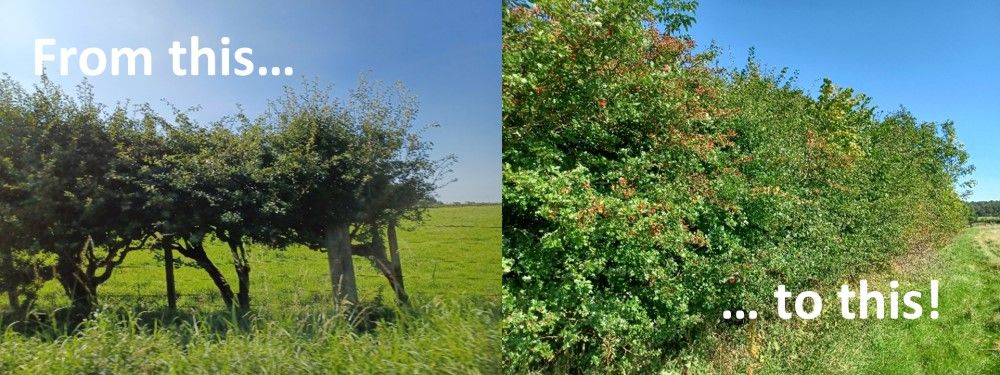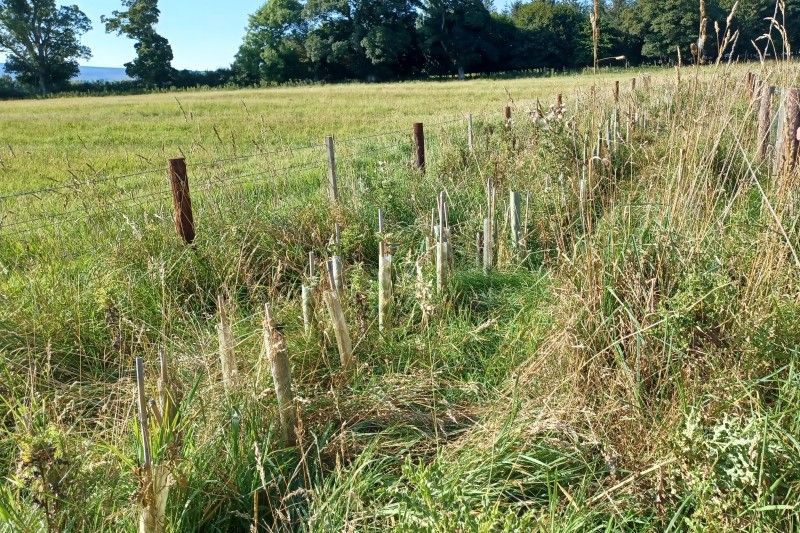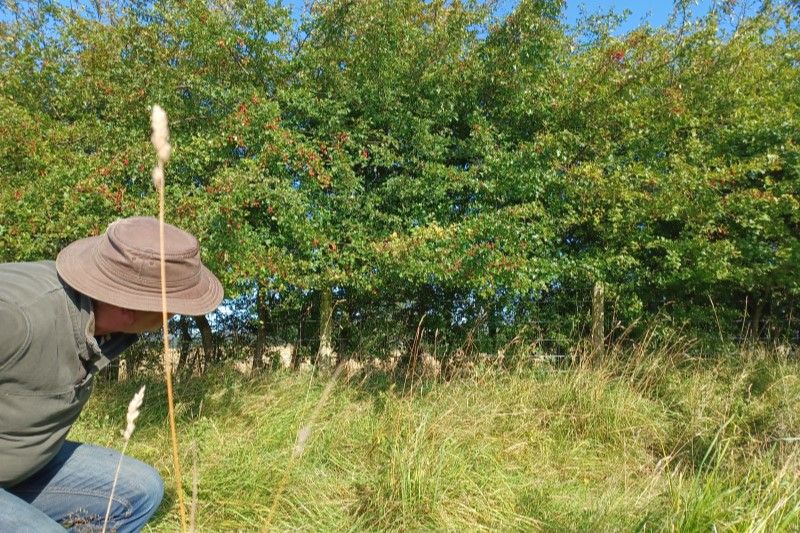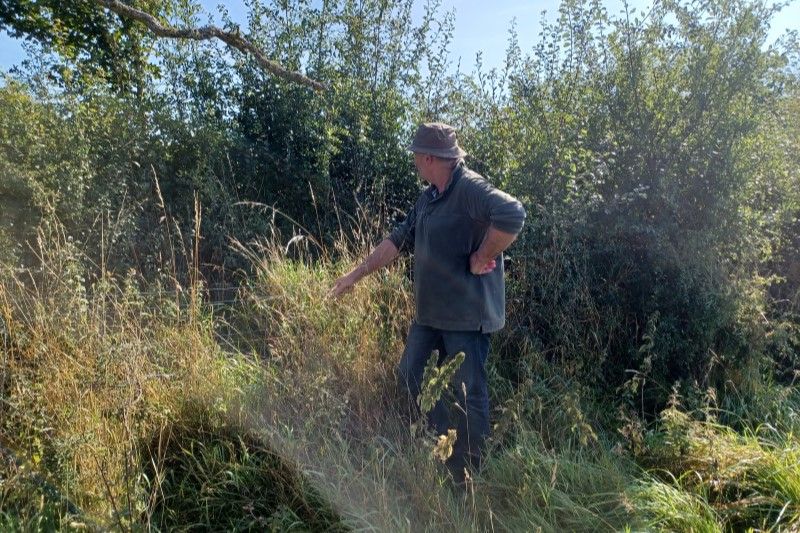PTES’ Habitat Officer, Megan Gimber, recollects a recent trip to Northumberland, organised by the Coquetdale Branch of the Wildlife Trust, to meet farmer Kevin and learn how he has restored his hedgerows.
Northumberland hedgerows at their finest
A recent visit to Northumberland had me flabbergasted at the difference one person can make. In an area perhaps not known for the quality of its hedges, (is that fair?) I knew I’d arrived at the right farm when the hedges changed from the over-trimmed, top heavy, sheep browsed, and leggy to big, billowing, thick and fruit-filled.
My visit happened to coincide with an unseasonable heatwave so we, like the livestock, kept to the shade that these wonderful hedges offer. I was reliably informed that they are worth their weight in gold in winter too, when these high hills are bombarded by strong wind and storms.
I immediately recognised a fellow hedge enthusiast in Kevin, who’s been farming here for a couple of decades. He told me about the 1840s map of the farm he stumbled upon by chance in a loft, and how he used it as a template to restore elements of the farm, including replanting 9km of hedgerow.
It’s not all about looking back though; these hedges add value to his farming as much, if not more, today than they did a century ago.
Restoring, replanting, rotation
And the restoration didn’t stop there. Kevin was convinced that one strange, curved field feature was another old hedge boundary, despite it not featuring on the old map or any since. Perhaps it was already lost by 1840s. But it looked like an old hedge line, and it made sense to have a hedge there so this one was re-planted too.
Kevin manages his hedges on a laying rotation. The young hedges are left to grow for 10 or so years after planting, at which point they are layed. To me, this is the best way to establish a good young hedge; it’s a great opportunity to remove the spiral tubes (honestly, there is never a good time for that job otherwise!). The regrowth thickens up the base as the 5-6 whips planted all regrow multi-stemmed, making for a much more robust hedge in the long term. A layed hedge also stores more carbon. But this wasn’t the main reason for this approach here. Kevin tells me that the leggy 70cm of stems at the bottom of the hedge, branchless due to the spiral tubes, act like a wind tunnel and funnel the wind directly at lamb height. Laying them is the best way to get rid of this legginess, (called a high base canopy) and protect the lambs in spring storms.
‘I’ve learned since this one’ he tells me, ‘I should have left more space between the hedge and the fence, this is a bit of a squeeze to get in to lay.’ Hedges planted since have the fences further out, specifically so he doesn’t have to take the fence away to first lay the hedge. Even with his knowledge, experience and enthusiasm, there’s still more to learn and refine.
Hedgelaying is a family affair
Hedgelaying is a family affair, often joined by his daughter to get them done over winter. All these young hedges are easier to lay than the big old ones. The young stems are all of similar sizes, are all more flexible, and won’t have any rot in the stems that can so easily snap a stem unexpectedly as you cut.
A point of particular pride for Kevin was the time a lamb somehow got through the hedge fence, but wasn’t able to get through his layed hedge!
There are a mixture of hedge trees on the farm. Some massive great oak and sycamore, some small apples and hawthorns left as trees. Some planted in the hedges, some as hedge plants left standing when the rest of the hedge was layed. Whilst we stood discussing the diversity of hedge trees, the birder among us was getting increasingly excited by the feathered dashes darting about all around.
Kevin describes how some birds really like the hedge outgrowths of blackthorn and bramble. ‘They hop from the hedge to the outgrowths where they look around to check it’s safe before hopping down to feed in the margins.’
I came away from that farm with so much hope; proof of what is possible, with the birdsong still ringing in my ears. It was a great demonstration of how far you can get with the ‘I just love it’ attitude Kevin exudes.




